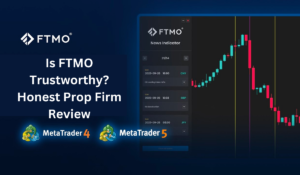Are you striving to achieve financial success in your business or investment ventures? Understanding the concept of the break-even point is crucial for making informed decisions and maximizing your profitability. In this blog post, we will delve into the definition of the break-even point, explore the formula used to calculate it, and provide real-life examples to enhance your comprehension. Let’s dive in!
What is the Break-Even Point?
The break-even point is a fundamental concept that determines the level of sales or investment at which neither profit nor loss is incurred. It represents the equilibrium point where total revenue equals total costs. Whether you are running a business or engaged in financial markets, identifying the break-even point is essential for assessing the viability of your operations.
Calculating the Break-Even Point
To calculate the break-even point, you need to consider the fixed costs, variable costs, and the selling price of your product or service. The formula for determining the break-even point can be expressed as:
Break-Even Point (in units) = Fixed Costs / (Selling Price per Unit – Variable Costs per Unit)
By plugging in the relevant values, you can easily calculate the number of units you need to sell to reach the break-even point.
Real-Life Examples
Let’s explore a couple of examples to illustrate the application of the break-even point:
Example 1: Business Break-Even Point
Suppose you run a business with fixed costs amounting to $10,000. The variable cost per unit is $50, and you sell each unit for $75. Using the break-even formula, we can determine the break-even point in terms of units:
Break-Even Point (in units) = $10,000 / ($75 – $50) = 400 units
This means that you need to sell 400 units to cover all your costs and start making a profit. Any sales below this threshold will result in operating losses.
Example 2: Investment Break-Even Point
Consider an investment scenario where you purchase 1,000 shares of a company at $30 per share, with a commission rate of 0.10%. To calculate the break-even price, we can apply the formula:
Break-Even Price = (Total Investment Cost) / (Number of Shares)
After factoring in the commission, the break-even price for this investment would be approximately $30.03 per share. Selling the shares at a price higher than this will yield a profit, while selling at a lower price will result in a loss.
Impacting Factors and Strategies
Several factors can influence the break-even point. In business, factors such as demand, production costs, and equipment repairs can affect the break-even point. For investors, commissions and dollar-cost averaging play a significant role. Traders, on the other hand, need to consider commissions and financing charges when determining their break-even price.
To reduce the break-even point, businesses can focus on optimizing their production processes, lowering fixed and variable costs, or increasing unit prices. Investors can seek out low-commission brokers, while traders can benefit from brokers offering volume-based rebate programs and tight spreads.
Conclusion
Understanding the break-even point is vital for achieving profitability and minimizing losses in your business or investment endeavors. By grasping the concept, applying the formula, and analyzing real-life examples, you can make informed decisions and steer your operations towards success. Remember, the break-even point serves as a fundamental tool in your financial toolkit.
Now that you have a solid understanding of the break-even point, it’s time to apply this knowledge to your own ventures and witness the positive impact it can have on your bottom line. Best of luck!







